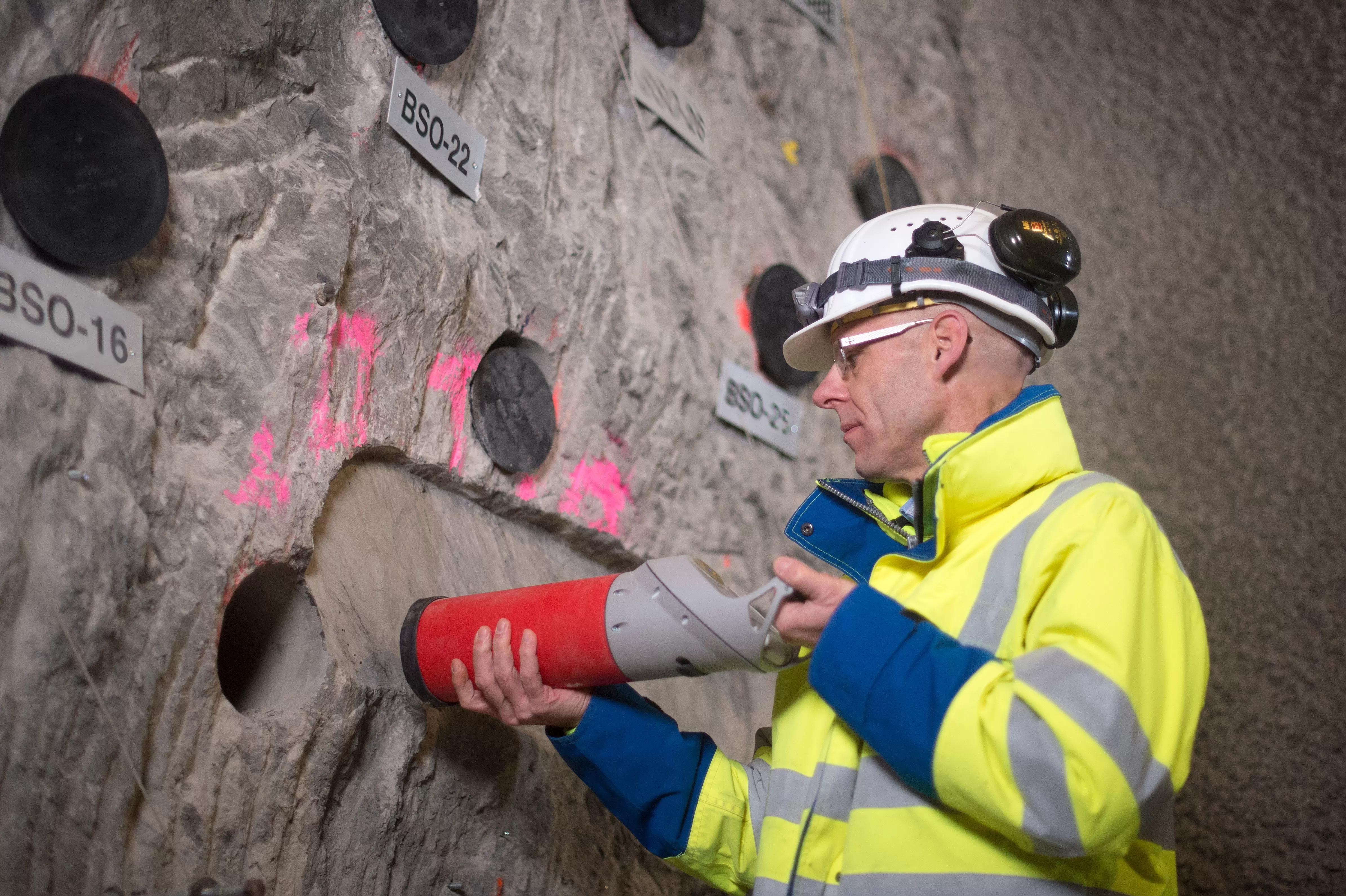
Experiments in underground rock laboratories
Optimising a repository: HotBENT Large-scale Experiment
High-level waste and spent fuel assemblies disposed of in emplacement drifts radiate heat. With this experiment being conducted at the Grimsel Test Site, scientists want to investigate how warm an emplacement drift for high-level waste can eventually become. In the experiment, heaters are used to simulate this heat. The main focus is to investigate bentonite, a clay-rich material, that will be used for sealing such emplacement drifts. Bentonite prevents flowing water from coming into contact with the radioactive waste, and it retains the waste in the repository. For this reason, it forms one of several safety barriers of a deep geological repository.
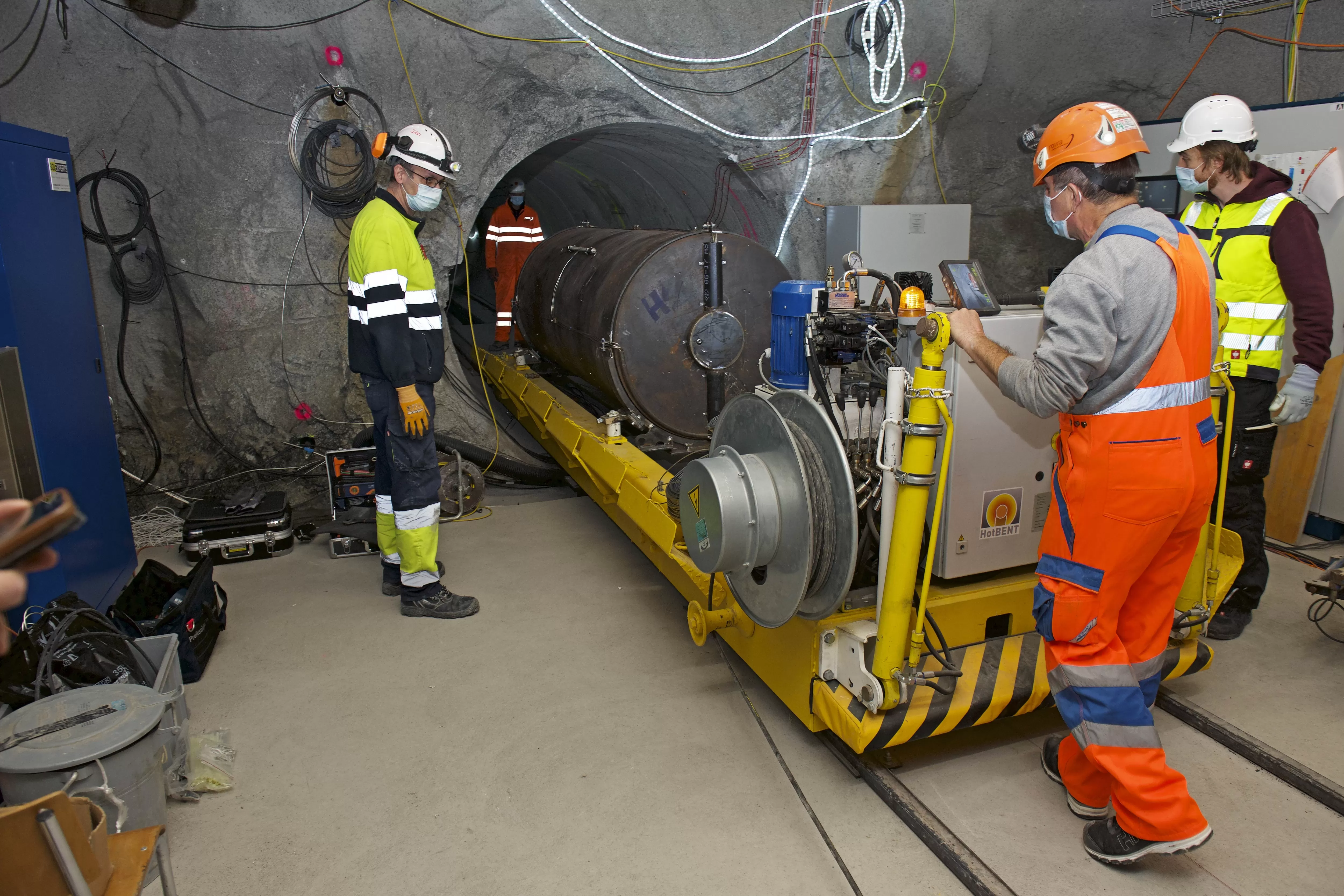
The name of the experiment already implies that bentonite will be heated. When bentonite becomes too warm, there is a risk that it can no longer provide optimum enclosure of the radioactive waste. The aim of the experiment is to ascertain what temperatures bentonite can safely withstand and what happens when those temperatures are exceeded. The outcome of HotBENT will complement existing knowledge on bentonite and repository layout.
Constructing safe tunnels in a repository: the TS Experiment
“TS” stands for “testing tunnel support systems in the Opalinus Clay”.
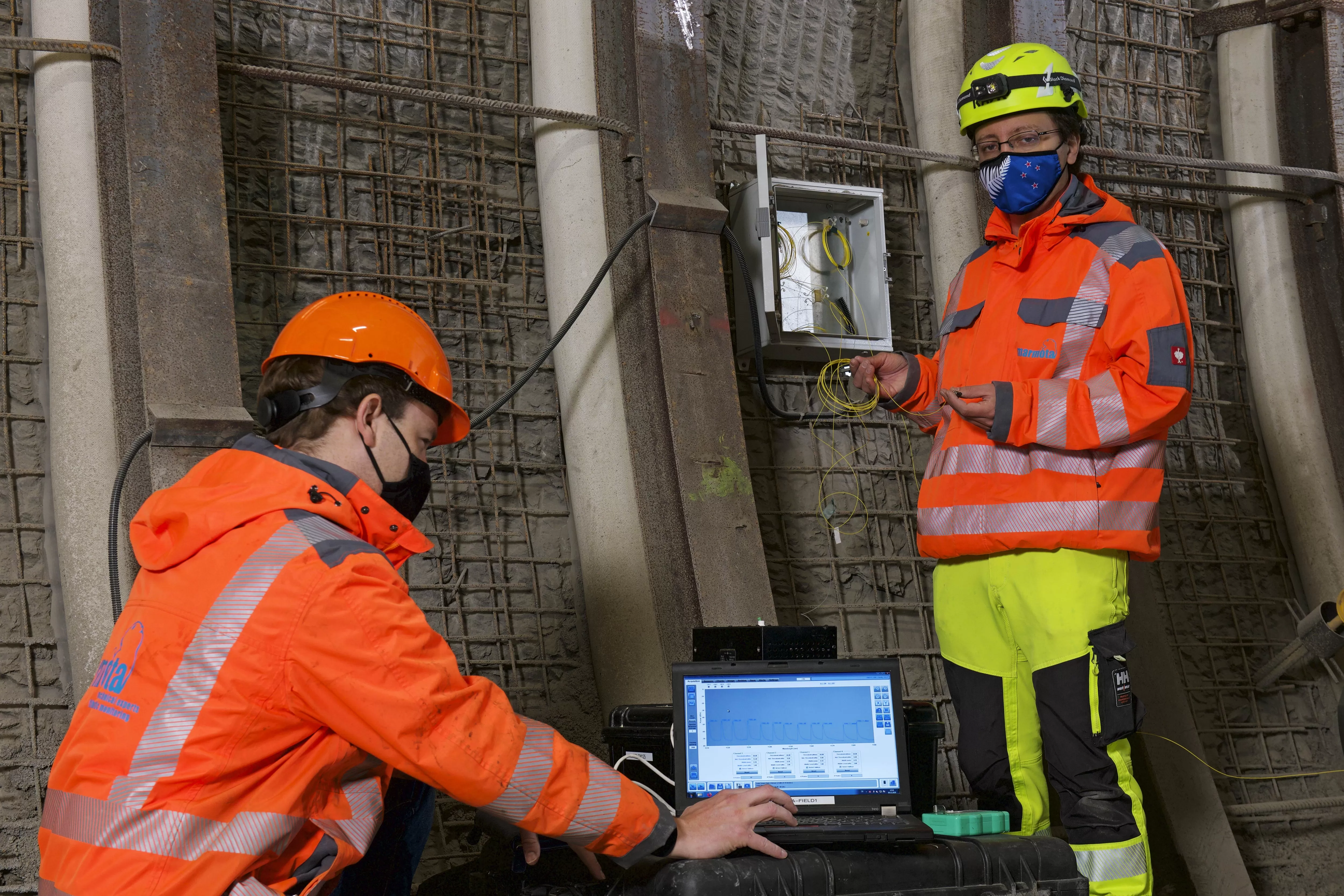
A deep geological repository has to have tunnels in the Opalinus Clay. The clay rock is malleable and hence places higher demands on structural engineering during the construction of these tunnels than other more stable rocks such as granite. At the Mont Terri Rock Laboratory in Canton Jura, we are investigating the best approach to tunnel construction, particularly with regard to the associated excavation and support systems.
The TS Experiment involved lining three tunnel segments with different support systems such as steel arches (see photos) and shotcrete. The experiment provides information on the behaviour of the linings and the Opalinus Clay rock during tunnel construction. This allows scientists to predict how and to what degree Opalinus Clay reacts to external impacts and whether the tunnel lining will be robust enough to withstand the overburden pressure. They need this information to dimension the tunnel support in a future repository.
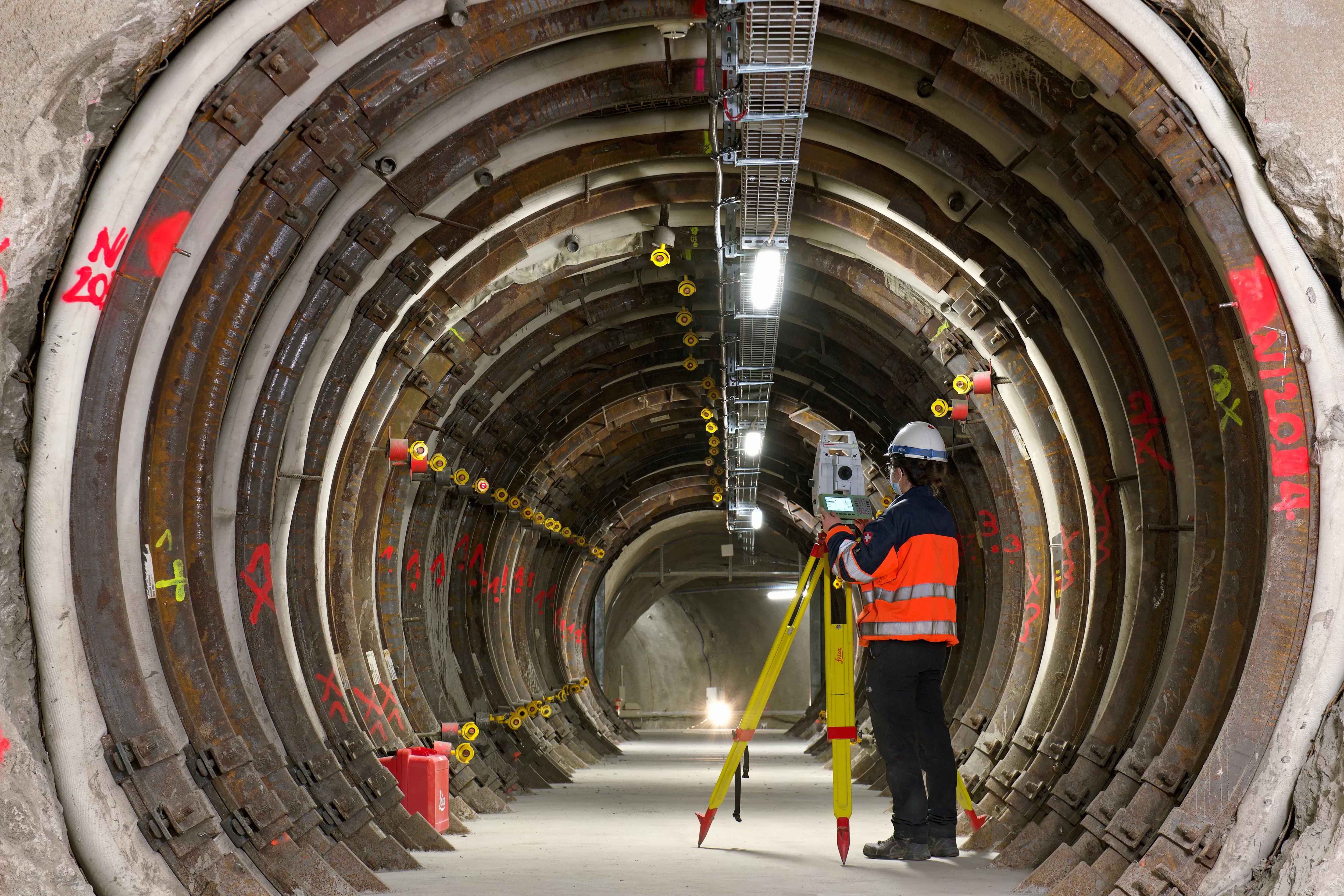
Investigating gas transport in a repository: the GAST Experiment
In a backfilled repository, the corrosion of metals and the degradation of organic materials produces gases such as hydrogen, carbon dioxide and methane. If the resulting pressure becomes too high, this could impact one of the safety barriers of the repository. Gas can be released through the tunnel walls and infiltrate the clay rock, and processes take place that consume gas. The gas can also migrate along the backfilled caverns and tunnels at the disposal level, which counteracts the build-up of pressure. Gas-permeable tunnel seals facilitate gas transport. The production, consumption and transport of gas occur very slowly and are being investigated in several experiments.
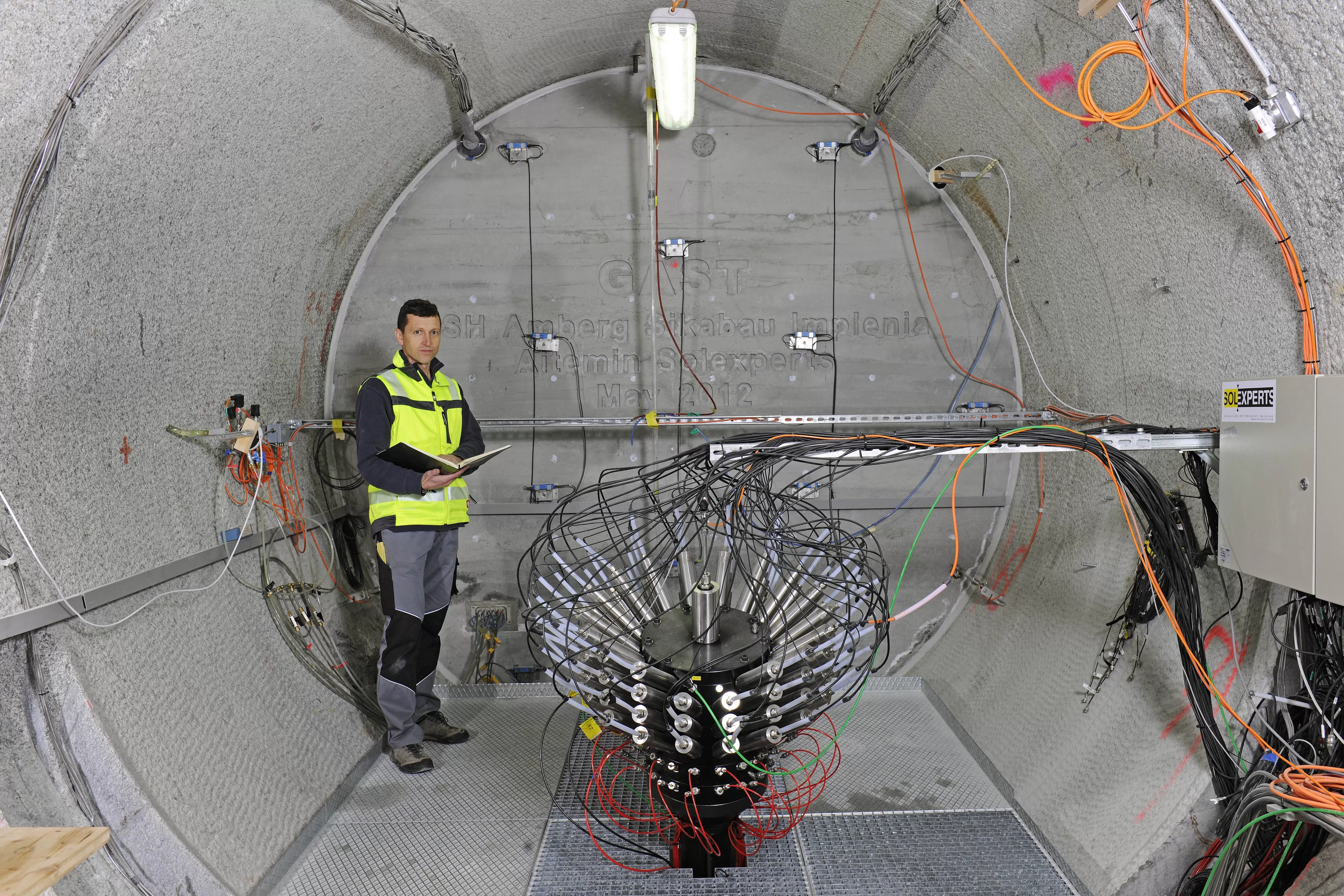
Since 2012, the GAST Experiment at the Grimsel Test Site has been testing a gas-permeable tunnel seal on a large scale. The seal consists of a mixture of sand and clay. The investigation focuses on the saturation behaviour and the controlled gas transport through the backfill material in a realistic environment. In addition, the experiment provides know-how on whether these sealing structures are technically feasible.
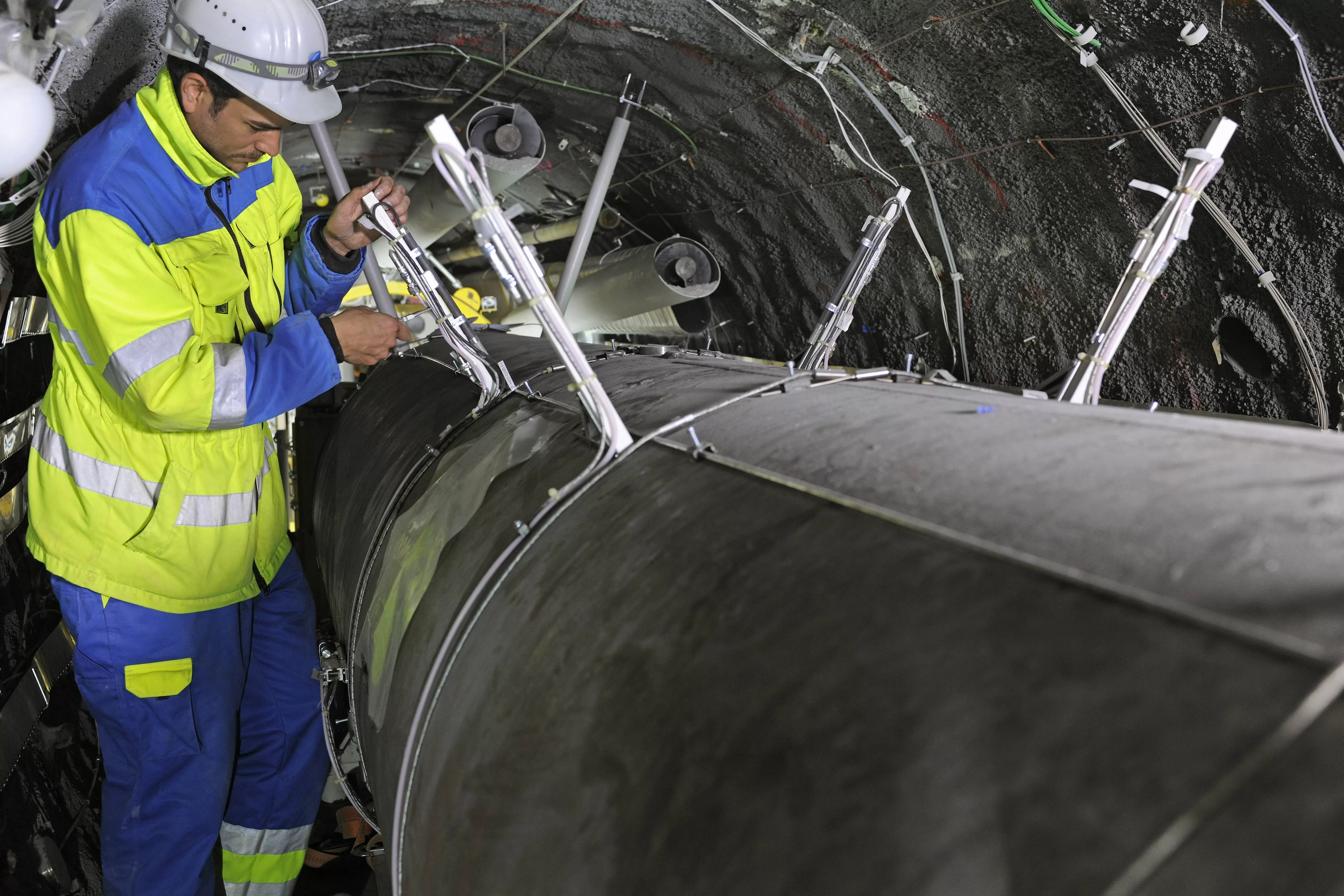
Impact of heat on the safety barriers: the FE Experiment
The “Full-scale Emplacement” (FE) Experiment at the Mont Terri Rock Laboratory allows Nagra to gain practical experience for the later emplacement of high-level waste. The 50-metre-long emplacement tunnel contains three heater canisters simulating the heat production of high-level waste and spent fuel assemblies. The tunnels were sealed and backfilled with a granular bentonite material. The scale reflects that of a future repository for high-level waste, and the work procedures are similar. Measurements focus on the impact of heat on the tunnel backfill consisting of granular bentonite material and the surrounding rock, the Opalinus Clay.
Metrologists have equipped the tunnel and surrounding rock with hundreds of measuring instruments. These can detect minimal changes in temperature, moisture, humidity and pressure as well as deformation and gas composition in the granular bentonite material and the surrounding rock. The instruments record around 1 million readings per day. These are compared to existing computer simulations and modelling studies and provide the basis for calculations for a repository. With the FE Experiment, researchers can obtain hands-on experience for the emplacement and backfilling processes in a future repository.
Cover photo: Maria Schmid